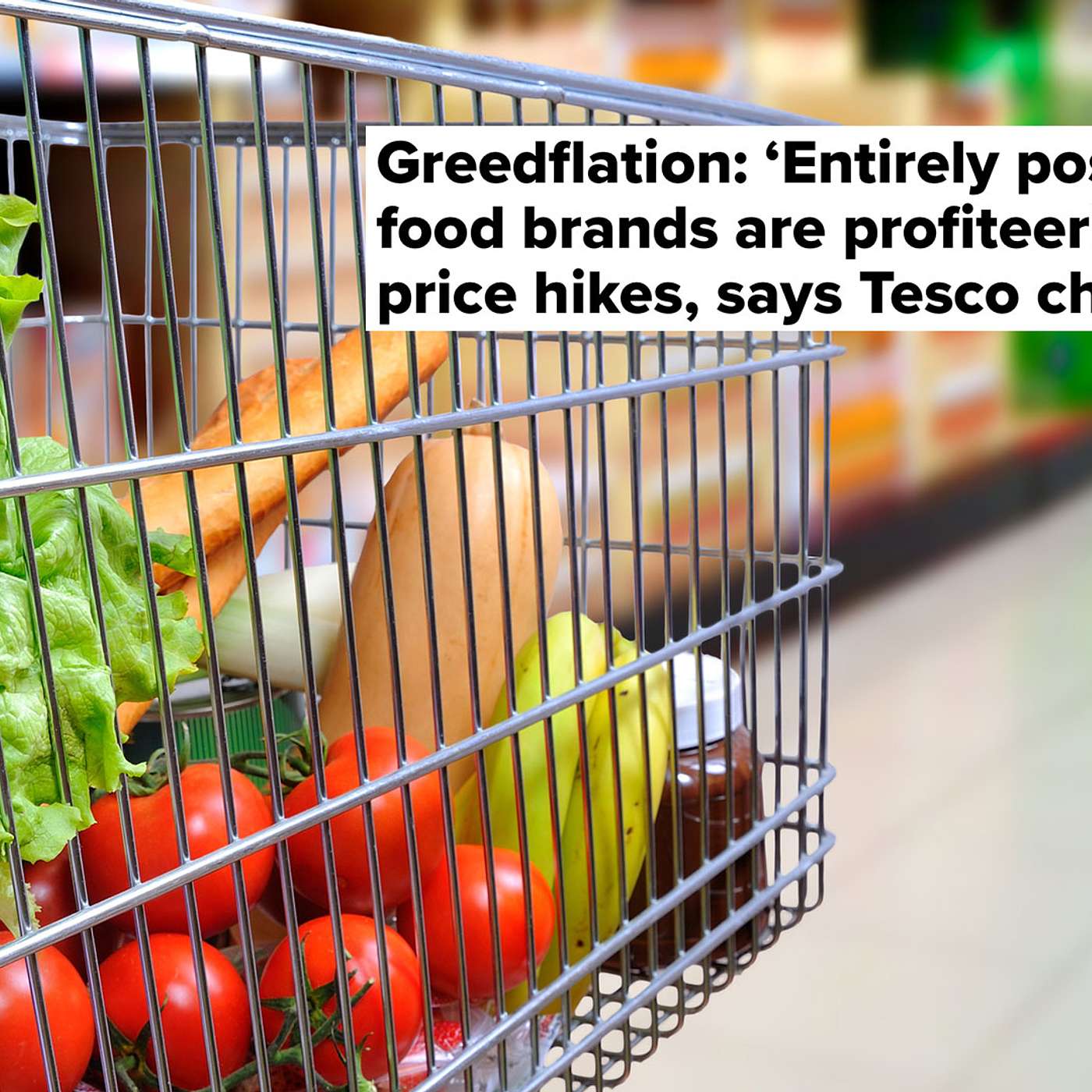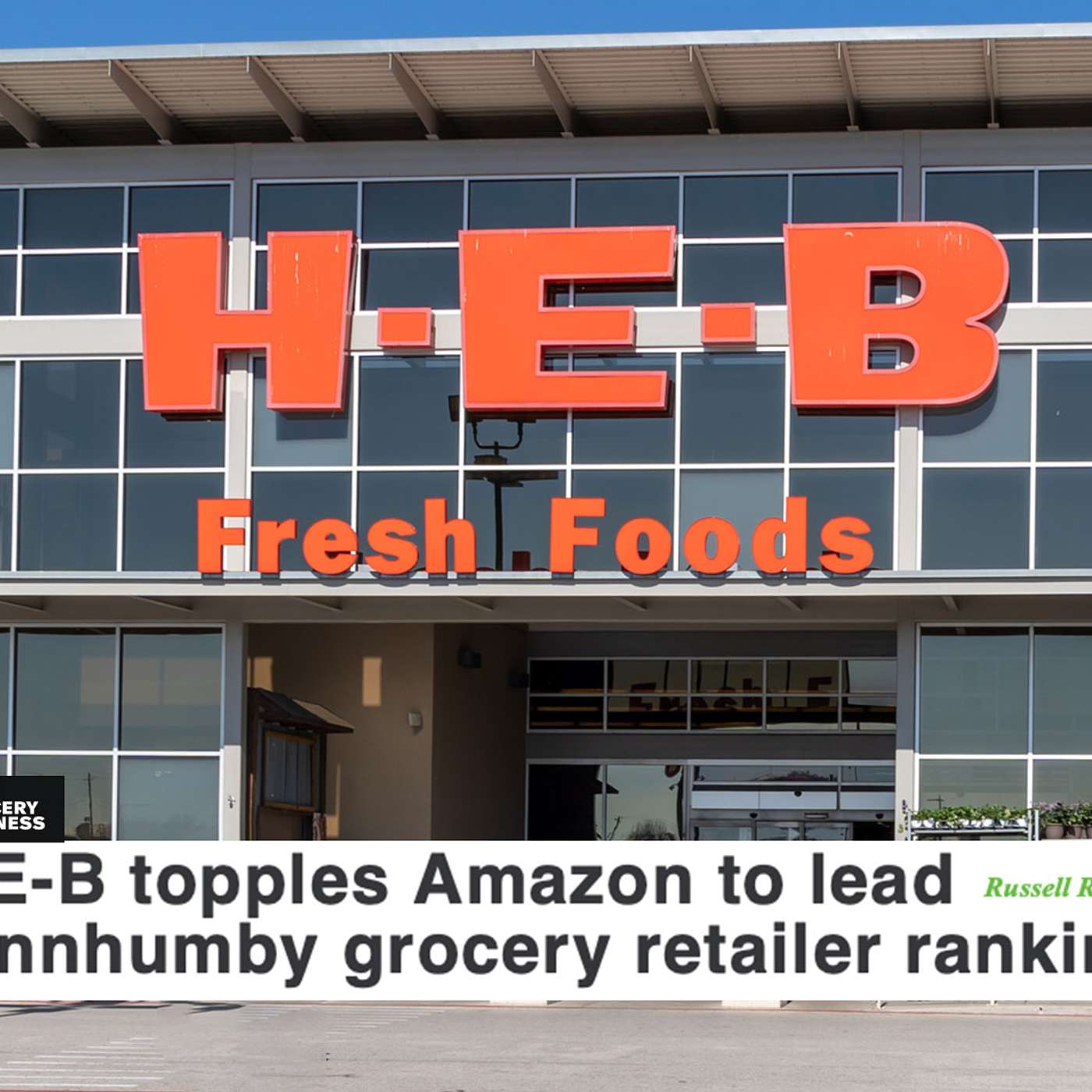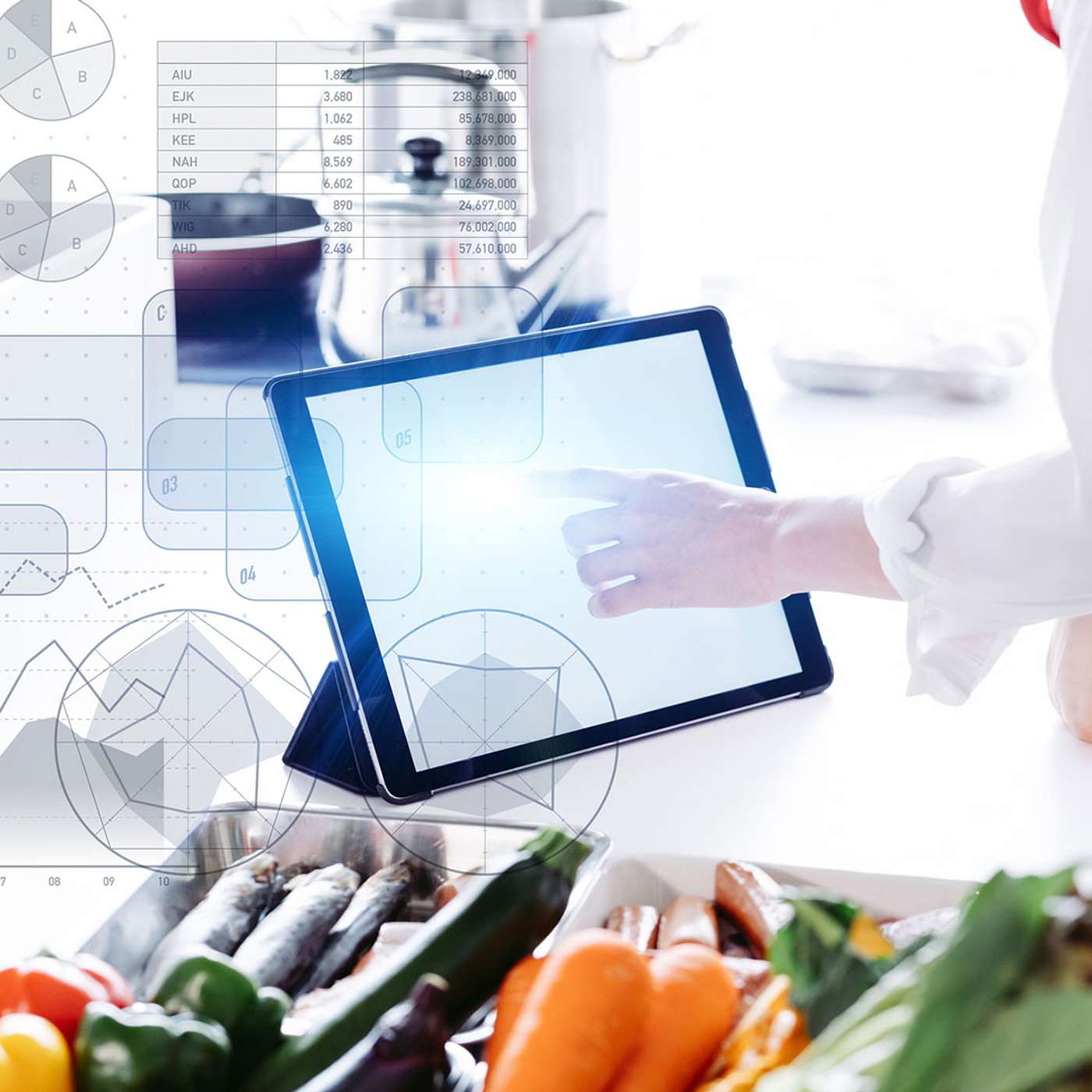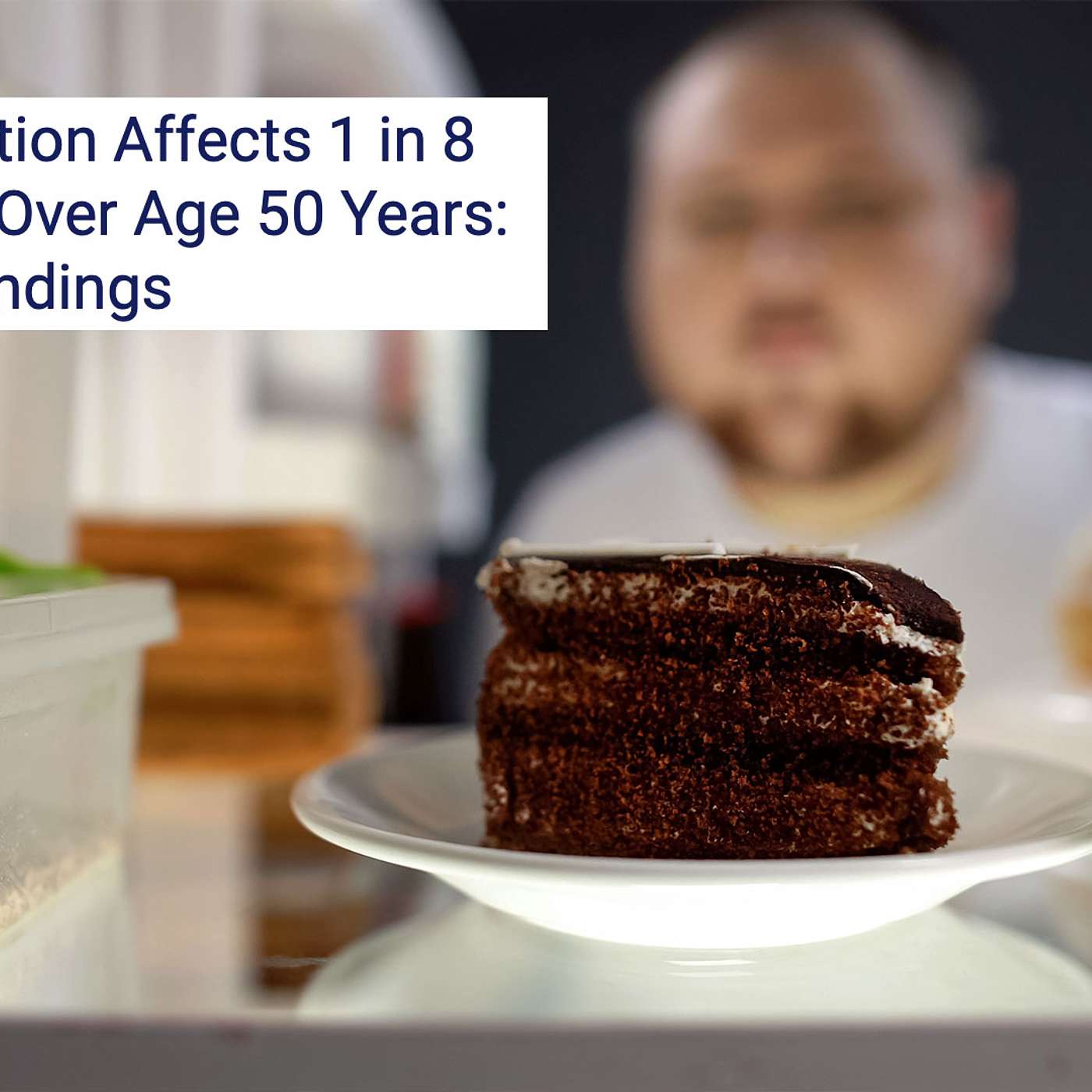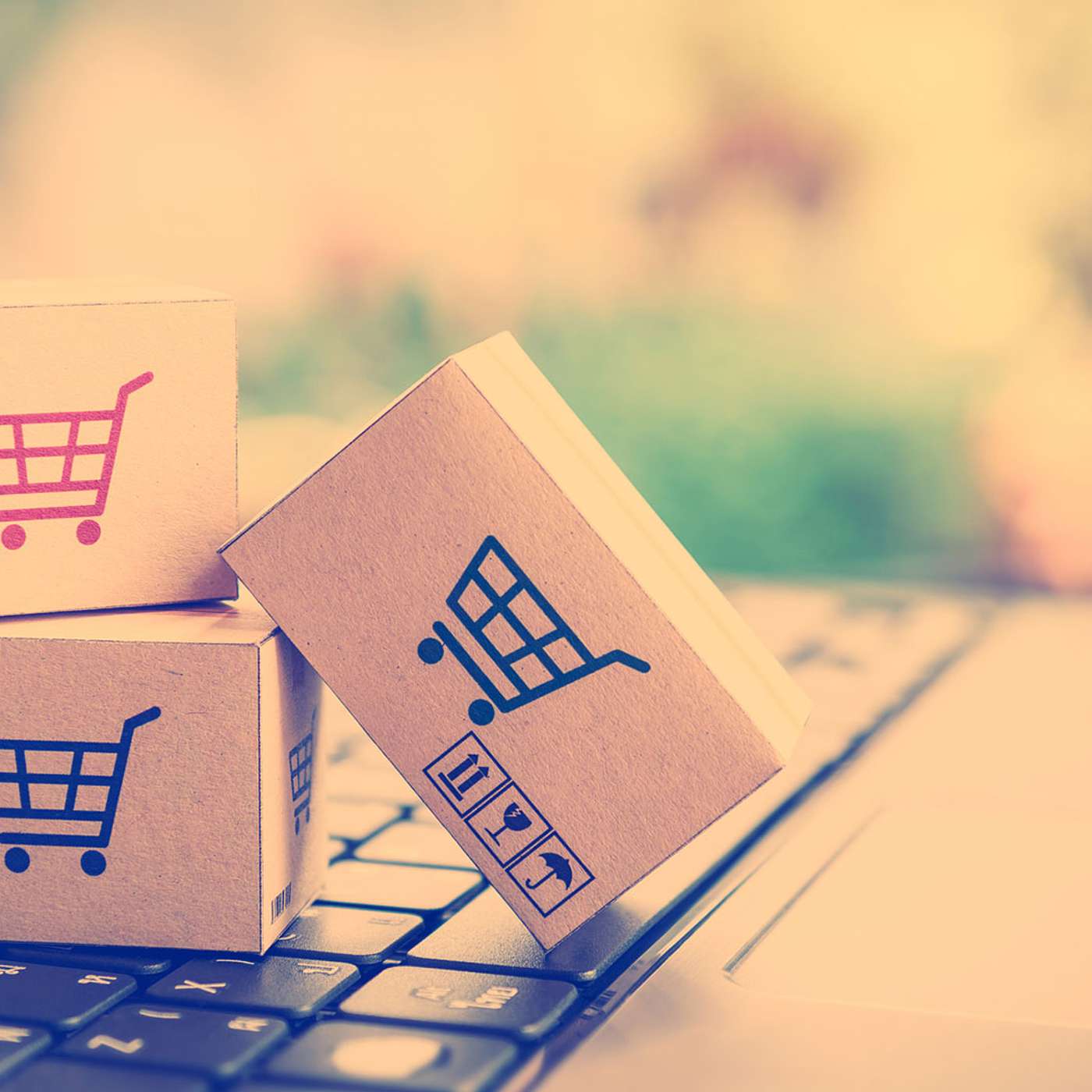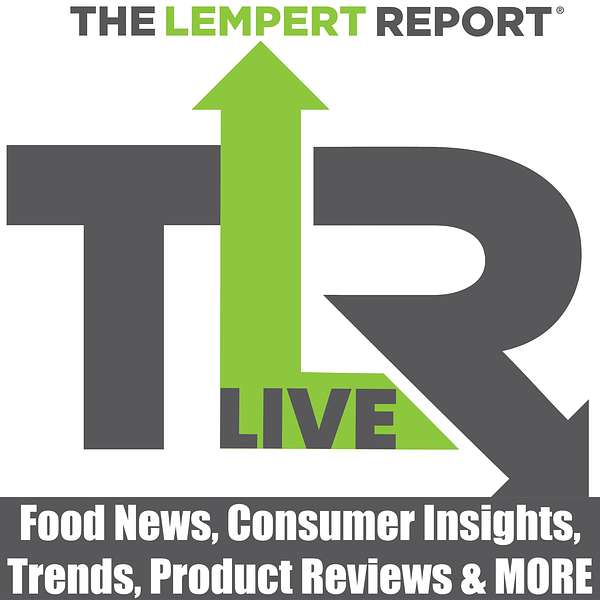
The Lempert Report LIVE
The Lempert Report LIVE
Greedflation, H-E-B vs Amazon, Baby Boomers New Addiction
Welcome to the Lempert Report LIVE.
- We take a look at how retailers are reaction to “greedflation"
- H-E-B comes out on top (again)
- Imagine AI being the next celebrity chef
- Baby Boomers new addiction – and it has nothing to do with designer anything
- Why food brands are turning to Direct to Consumer
- On the Bullseye it's all about the 2023 Super Bowl!
Welcome to the Lempert Report Live. On today’s broadcast we take a look at how retailers are reaction to“greedflation”, H-E-B comes out on top(again), imagine AI being the next celebrity chef, Baby Boomers new addiction– and it has nothing to do with designer anything, why food brands are turning to Direct to Consumer and on the Bullseye its all about the 2023 Super Bowl! Check out Food News Today on SupermarketGuru.com for the most up to the minute newsfeed courtesy of our partnership with Cision. Let’s get started. So, Sally, when we take a look at the latest term in our food world, it's greedflation. It has nothing to do with consumers, but it has everything to do with retailers saying to brands, Hey, you're getting a little greedy here. Chairman of Tesco, John Allen said it is entirely possible that some food firms are profiteering from inflation at the cost of some of the poorest consumers. He also said that he told the BBC that Tesco's had a falling out with a number of suppliers following discussions over price hikes that the supermarket has challenged, they've created a new team to monitor food, import input costs against price rises. They're challenging companies that it believes are lifting prices disproportionately. We saw this a few years ago, pre pandemic between the fight between Campbell Soup and Walmart. And in fact, Walmart said, we're not gonna take the price increase, Campbell Soup sales overall, not just at Walmart, but overall as a result of Walmart taking Campbell's products off their shelves, which have still gone is down 2%. In this morning's, Washington Post is a great story by Jacqueline Pizer that talks about this stores are pushing vendors to cut prices, but your bill, obviously talking to consumers, will stay the same. And whether it's a target, whether it's a giant eagle, all the big players, retail players are pushing the CPG companies to reduce costs. And what do you think is gonna happen here? Who wins?
Sally:Well, the other side of it is that some consumer groups are reporting, you know, that retailers are passing the buck to these brands, and that actually they're raising their own brands, their store brands more than these other brands that are coming in. There definitely, should be, there's reason to believe that there should be more of a conversation happening between these retailers and these brands on how to make these products more affordable for their shoppers. We've gotta think about the shoppers. And I wanna tell you, Phil, yesterday I was in Kroger and as I was shopping. I passed an elderly man who was shopping and he had a very, very stressed look on his face. And he looked at me and he said, I don't know how I'm gonna make it. I don't know how I'm gonna buy food. And I think retailers and, and brands need to really pay attention to how much shoppers are hurting.
Phil:Absolutely. You know, there, there's no question about it. And also smaller brands, what's in this Washington Post article also talks about the fact that Nestle, Kraft and J and J, they can, they can survive the hit. But, you know, most small businesses can't, and they risk losing their spots on the supermarket shelves as they engage in these fights with retailers to take product off shelves. Also the bottom line is that they're replacing it with private label. And to your point, now, these are UK numbers, but there's something called the Supermarket Inflation Tracker, by the name of which, with a question mark at the end, they found that branded items had a lower inflation rate than that of supermarket's own label items in the uk in the three months to December, 2022, price of own store label brands rose 18.3% over the year, compared to 12.3% for branded items. So when we look at this fight that's gonna take place, and I don't think it's anywhere near over, I think we're gonna see a lot of consumers get hurt. I think we're gonna see a lot of small brands get hurt, and, you know, these big guys at the top are gonna be, you know, going at it. And hopefully we can have some price, especially as inflation is going down. We've got a better system now in place. We have oil down, so packaging prices are down. So hopefully, you know, I don't think we're gonna see price decreases, but if we can just have'em level off, tha t would be a great thing. And talking about prices, D unnhumby just released their retailer Preference Index. B e fore we talk about the top 10, the ones that had the best value proposition, H-E- B, Costco and Amazon, the repor t says, the y' re most aligned to what matters most to consumers. They provide the best combination of customer benefits while minimizing customer costs. This y e ar's R P I is b a s e d on five preference drivers, price, promotions, rewards, that's one, quality, speed and convenience, digital and operations. And the top 10, yay, H-E-B took the number one spot from Amazon, followed by Costco, number two, then Amazon, Wegman, Sam's Club, Market Basket, and Amazon Fresh, f ollow ed by Trader Joe's at number e ight, W inCo at numbe r nine, and BJ's at numbe r 10. So when we look at surveys like this, my hope is that other retailers really look at it who didn't make the list, and they learn from it. What do you thin k a re, are re tailers looking at these things and saying, Hey, why is H-E-B number one, and I'm not
Sally:Well, I hope so. If they're in it for the long game, then they are paying attention and they are paying attention that those are the most important drivers, the most important preferences are price, you know, price and what they're getting for the quality in proportion to the price. And, H-E-B is a retailer that does that very, very well. C ostco is probably doing better because, t he whole warehouse club category seems to be, there's three of them in the top 10, I think, this year. And so, you know, people are finding deals. There is what I suspect. And so, yes, o ther retailers need to be paying attention.
Phil:Matt O'Grady, who's president of Chicago based Dunhumby America, said, we believe this report can serve as a blueprint to help grocers improve their competitive positions while providing key findings for marketing and consumer preferences. He goes on to say that retailers have two things in common leading retailers. They've displayed superior ability to navigate supply chain issues by improving their ranking in the operations pillar, which measure out-of-stock perceptions among other things. And Wegmans. Yay. Danny and Colleen, you cemented your position as the best on quality, and you've led in that preference driver in every R P I since 2017. So, good for Wegmans as always. I'm intrigued. Y ou know, wh en we go back to th e days where we started the Food Network we had some celebrity chefs like Emeril and Julia Chi ld re runs and so on. It's fast forwarded a lot since that point. And now there's a new sta rtup, i t s tarted over in India, now it's come to Palo Alto, th at could be the next celebrity chef. What's that all about?
Sally:Well, Phil, it's called CloudChef. And it is all based on AI sensors and scanners. So what they do is they get a popular chef to make a one of their signature di sh d ishes with these sensors and computers following what they're doing. And what it's doing is, it's not only getting the exact recipe, but it's also capturing the chef's intuition, how the chef stirs the pot, how brown the onions are. So it's really capturing all the nuances of making a great dish. So w hat you can do with this, with Cloud chef, and this is, this could be a really great benefit to chefs out there who can only cook in one place, is yo u can, if available in your area, you can order one of these dishes for delivery, and a kitchen is set up to make this dish for you exactly like the chef would. Now, we can think about this very much like a Spotify playlist, how musicians can put their music up on Spotify and people can come and get it there. So it's kind of the same, same idea that you can go get, get the food made by AI or by, by a person using AI in a kitchen, and a royalty will go to the chef. Now, what I'm concerned about, Phil, and I wonder what you think is, are those royalties really going to go to the chef? Because if we look at music and we look at art and what AI has done to that industry, it hasn't happened. Those creators have not been paid out. So I really hope that the same thing doesn't happen to these chefs.
Phil:Yeah. Y ou bring up a really good point that it's a cool idea. Ri g ht now what they're doing is, is they're using it to have, I don't even wann a cal l them che fs, but people with no culinary schools in dark kitchens and in restaurants following this AI so that they can make these superb dishes. I th i nk that, you know, what, what you're gonna see happen that hopefully could prevent your point is that on the menu, it's gonna have the chef's name so that it really brings to that restaurant a new level of image. And, you know, piza zz if you would, and why you should buy this, you know, dish. Becaus e of this famous chef. Also, they're talking about doing something for home cooks that you could do it a t home and follow the same thing. And to y o ur point, what's really interesting is, that the y're able to get the ch ef' s intuition. I'd like to know more about that. C loud C hef says that the employees o r people who have never stepped foot in a kitchen before, they prepare the meals, which are stitched together using software, wh ich I find really interesting. I t hink we have to know a lot more before it comes to your home and my home. But, you know, we'll see. But certainly AI is getting bigger and bigger. The other downside to the whole thing is we then clump, as we've seen on Spotify and other music services, we clump the top 12, 20, 100 chefs, and that's what everybody's getting. And the poor chef, you know, in a small restaurant in Nashville or or in Santa Monica that wants to make it never has a chance because this AI really takes the place of that person. So I'll have to see how this all plays out, but to your point, the royalties really need to be monitored properly, otherwise you're gonna have chefs, you know, sign up for it and then they're gone. They' r e out of it. A new poll from the National Poll on Healthy Aging has just come out, t alking about one in eight Americans over the age of 50 have food addictions. Intense craving l ead symptoms of addiction, a highly processed foods, no surprise, nearly one in four respondents saying that at least once a week, they had a strong urge to eat food in this category that they couldn't think of anything else. Are we that bad in our place where we have to get addicted to processed foods?
Sally:Well, you know, reading this story, Phil, I did think to myself, okay, do I once a week think of eating highly processed food? And, you know, maybe I do once a week think about french fries from McDonald's and really, really want them, but yeah, it's not surprising because highly processed foods a re, we are surrounded by them. And you know, what's even more alarming to me is that while in this, in these findings, 32% of women are saying that they are not in good physical health. 14% of men say they are not in good physical health. What's more alarming to me is that 45% of women say that they are not in good mental health, and 23% of men say the same thing. And I think this is really coming to the surface right now, particularly now that we're out past this pandemic and, and those, those mental illness rates increased, and we have to think about our mental health and how that is connected to our food and addiction and the way that we take care of ourselves.
Phil:Yeah, I agree. Two points that I w anna make. One is this weekend I just discovered that we're not post pandemic. I have two people that I know that got covid, thi s pas t we ekend.
Sally:It's still here.
Phil:It's still here. B ut what I love about this University of Michigan psychologist, As hley G erhardt, Ph D, who did this study of over 2100 participants, what she also said, which I think is a note for all of us to take, is that they have 13 questions to determine whether and how often older adults experience the core indicators of addiction. And what they say is that these set of questions can be incorporated into clinical screenings th at o f ten a t o ffice visits to help identify adults with food addiction, who can benefit from nutritional counseling, support groups, etcetera, etcetera. Hey, why not give these 13 questions to every retail dietitian that's out there as a tool to help consumers to help their shoppers understand if they do have a food addiction, and then being able to give a food prescription to them on how to get past it. Since the pandemic, actually, even before the pandemic, there was a lot of movement of food companies to direct to consumer things. We've seen it for razor blades, we see it for even yogurt products, s ome other food products. And there's an article t hat was written by Patrick Nycz, he's the president of Newpoint which is a marketing agency all about food. It was published in Forbes, we ighing the benefits, both pros and cons of a direct-to-consumer model for food brands. And what's interesting to me is some of the pros and cons, and I'd love to get your reaction. First, direct sales and a higher potential profitability, no question about it. If you can make that connection to a consumer and they keep on coming back, you're gonna make more money rather than going through a retailer or a wholesaler, would you do that?
Sally:Would I do that as a brand or would I buy a consumer?
Phil:Both, both. Both, both.
Sally:Well, I have purchased things. The product that comes to mind first, and I think they are actually in stores now, but initially, Magic Spoon, the cereal that has become very, very popular, was only available on their website. And yes, I would go to a website and buy directly from the maker of this product, p articularly if they can offer me a lower price by cutting out the middleman, by not having to take the c ost o f putting their products in stores.
Phil:Well, what I've found, and I've also bought certain products, you know, online food products, beverage products, but usually I can't buy one, you know, I have to buy a case or I have to buy six or whatever else. A n d then most of the time I actually have to pay for shipping. So that for me, you know, keeps me from buying those things. And if I want it, I probably move to Amazon so I can buy one or two of them. The second point that they make is there's controlled growth and incre ased marg ins, again, the whole margin aspect, but for a small company, they can grow at a controlled pace. If you go to Kroger, for example, they like your product, and th ey take it on and you're a small company, you might not be able to afford, you know, the thousands of cases that, that Kroger anothe r retai ler might want. So you've got that cost, but again, they point out one of the cons is those smaller transactions, as we've talked about. The fact that you're in control of your marketing, advertising and sales, versus going to a retailer and having to pay slotting allowances. but you know, the reality is that you can start it on your website as you point out with Magic Spoon, and then it can move into retail. And you've got a lot more strength with that retailer. If you can go in and say, okay, here's how many I've sold online. Here's how many we project that you can sell by having people see it, and then, you know, add some sampling to your product if appropriate. But they also point out one downside that it's more challenging and it has potentially more expensive logistics on the back e nd of it. So, you know, we really gotta weigh if what the product is direct to consumer can be good. I think that some of the most successful ones, l ike Harry's, for example, with razors, w hich I do not use, but it's a small product. It's easy. It's a small expensive product. You know, I don't know what it cos ts, b ut you buy five razor blades and it could cost you 15 bucks or maybe it's less. Harry's, I don't wan t to put out your prices there, but it's easier to handle than if you wan na se ll a case of breakfast cereal, for example.
Sally:Yes, a lot less money to ship something, a smaller product like that, you know, shipping costs are really high right now. A nd I think the other big point is brand awareness. You know, when you get your product in a big retailer store, then you're getting brand awareness. So, these products that do go direct to consumers, you know, I think they've gotta be really, really good at social media and marketing their products. Ssocial media has given us a whole world of inexpensive marketing for products and the ability to purchase things very, very quickly when people see something on there. So, yes, you've got to weigh those different things, but definitely you've got to get your brand out there somehow.
Phil:And also to your point about social media, y ou can also put up a video. So it's the video of the founder talking about their story or it's a demo or it's a recipe. So it becomes much more interactive than just being on a shelf as well. So for those of you that are interested in direct to co nsumer, read this article in Forbes. It's a great read and you can learn a lot. Thanks Sal ly. The category management association released a brand new playbook in December that's aimed to help manufacturer's build and scale a category management function from the ground up, invest in the right areas and avoid some major pitfalls along the way. Check out the category management maturity curve outlined in the playbook and identify where your company might fall from. Testing out Catman all the way to aspiring members of the C M A can access the full replay of the webinar in the resource library. Non-members certainly can visit catman.global to connect the association about membership.
CMA:Not only did we, we kind of conclude that everyone is going to be in a different place on this curve, but that also different parts of your business might be in a different place on this curve. So if you're just getting into the e-com space, you might be in the testing and adopting, whereas, you know, your big box stores and traditional grocery may be in practicing or aspiring. So not only can businesses be in different places and companies be in different places, but your business, the, the individual areas might be in different places on the curve. Also, just that it's constantly changing. When we got the first one, I think we, everything under practicing was still under aspiring, and I was like, yes, we are doing such a good job,<laugh>. a nd then realized, oh wait, that aspiring has changed. So there's de finite, definitely it's a constantly changing environment. You gotta be aware of that. bu t how those nuances play out and Im i mp act your, your business
Phil:On today’s Bullseye– Walk into every supermarket across the nation this week and there is no doubt you will know what major food event is coming up this Sunday on February 12– it’s Super Bowl time once again! And if you happen to live in Philadelphia or Kansas City– you’ll also be overwhelmed by your supermarket with all the team shirts, hats, footballs, pennants, and stickers to promote your hometown team and Super Bowl LVII. But what about the food? Philly is known for its cheesesteaks and KC it’s BBQ so expect a lot of supermarket promotions and sales for those ingredients in those cities; but for the rest of the 100+ million Americans expected to watch the game, they are looking at those food prices carefully in deciding what to serve this year at their Super Bowl party. Super Bowl parties represent a huge sales boost for supermarkets and foodservice operators. According to SNAC, the trade group for the snack industry, we spent$616 million in 2022 on snacks alone for this Sunday game; up 10.5% over the previous year, and they expect sales to be even higher this year! Frito-Lay’s Snack-Index consumer survey a week or so ago polled 2,000 adults who reported that almost half(49%) said that running out of snacks is worse than their team losing. Seriously? 38% of us are chiming in that its their number one go to Super Bowl mainstay is Chicken Wings, which according to the Chicken Wings National Chicken Council we spend over$2 billion dollars for this event’s favorite treat. We asked our Facebook followers what foods or beverages they would be“doing without” this year as food prices have skyrocketed. And surprisingly, no one said they would do without their chicken wings. That’s good news for shoppers as according to the USDA’s latest data, chicken wings are actually lower in price than they were last year– by almost 15%! Want more meat on those bones? Try chicken drumsticks that are even a better deal– last year they were selling at$1.62 a lb, now you can find them at$1.04. There is little doubt that the big winner at the Super Bowl parties this year is chicken. But that’s not the case for everything that comes from a chicken! It's no surprise to everyone that has shopped for eggs over the past year or so have seen a significant increase– up at least 60%- so it didn’t come as a shock to hear from our followers that deviled eggs, egg salad and hard-boiled eggs will be off the menu this year. Pork is also loaded with great buys- Back ribs are down almost 50% while Country Style Boneless Ribs and Spare ribs are about the same price as last year. If your budget is unlimited(and you want to impress) Beef Filet Mignon is also down over 50% over last year's prices and ground beef that is 90% lean or more is about$1 a pound less according to USDA’s National Retail Report. According to Wells Fargo’s Agri-Food Institute this year’s price of avocados, the main ingredient in guacamole, have dropped a whopping 20% since last year. But buyer beware, as the price of those chips adorning your Guac, according to the Bureau of Labor Statistics, is up 22% AND chips brands have come under fire for succumbing to“shrinkflation”– putting 7-10 chips less in each bag– which means the actual price you’ll pay per ounce is even more than the 22% reported. Wells Fargo also reports that beer is up about 11%- but analysis by the analytics firm Pattern, who tracks sales of foods on Amazon.com(which includes Whole Foods delivery) shows that if you buy canned or bottled beer on-line the price is actually down about 2% so expect shoppers to check out those on-line stores before they buy. A January 2023 Survey by Statista reports that 27% of us plan to buy take out for the big game. That’s great news for pizza places as in 2022 an estimated 12.5 million pizzas were sold on game day according to the American Pizza Community organization. But check those prices BEFORE you place your order– flour, cheese and oils have all taken huge price increases and unless you have been storing up those delivery coupons you might be better off buying a frozen pizza in the supermarket and baking it in the oven. A quick review on Target’s online ordering and delivery portal showed their own brand, Good& Gather selling a frozen 17.5 oz Wood-fired Spinach& Goat Cheese pizza for$7.56, a Red Baron Classic Pepperoni 20.6 oz pie at$5.69 and DiGiorno’s Classic Four Cheese for$5.69 for 12.06 ounces. At Domino’s here in Santa Monica, California the price is$17.99 for a carryout hand tossed 14” large pie(8 slices) with regular cheese and no meat. Here’s the bottom line: your shoppers want to enjoy the game, enjoy Rihanna’s half-time show and most of all these days they want to shop smart- without worrying about what it costs! What can your store do to help? The Lempert Report is all about inspiring ideas, making our industry think and challenging each other. Let’s think about“being the shopper” and how we can bring our supermarkets and restaurants closer to meet their needs. I hope you’ll come back to join us on next week’s installment of The Lempert report LIVE when we focus on the biggest and best insights– and the things that really matter. Be sure to visit SupermarketGuru.com for the latest marketing analysis, issues and trends and don’t forget to join us back here next Monday at 2:30pm Eastern for more.
